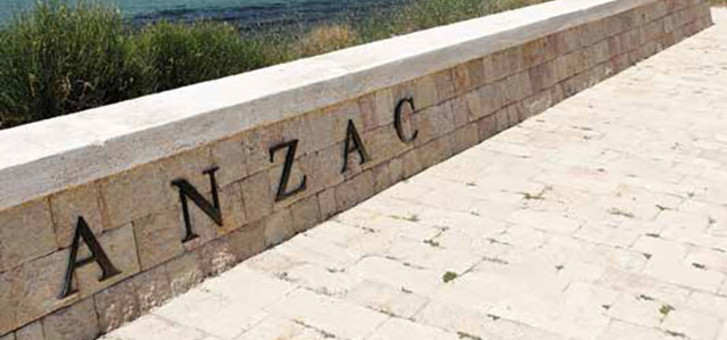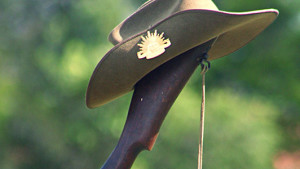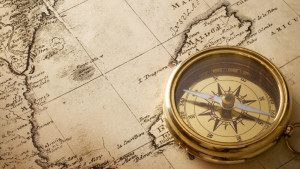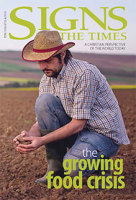Today, small waves lap the stony shore on what is regarded as a sacred spot by many Australian, New Zealand and Turkish citizens. History brought together soldiers of these countries, along with those of Britain, France and even India, to a shallow cove on the western side of the Gallipoli peninsula in Turkey, and transformed it into what is now known as Anzac Cove and revered by many nations.
In this relatively small area of land, some half a million men lost their lives in what is now commonly seen as a futile effort by the Allies of World War I to capture Istanbul. Questions have been asked over the years of the wisdom of the Allies’ push here, equipped only with outdated war techniques and frequent futile orders to advance against withering machine-gun fire. But dominance of the Gallipoli peninsula meant control of the Dardenelles (previously called Hellespont), a narrow waterway with access from the Aegean Sea to the Black Sea.
As most will know, it all began on April 25, 1915, as the troop transports brought men from Egypt to land on what was thought to be an easy target: a peninsula believed to be relatively sparsely defended. Unfortunately, in the early pre-dawn hours, the men, comprised mostly of soldiers from Australia and New Zealand, landed on the wrong beach, which proved costly and pitted the hapless soldiers against an impossible task of summiting crumbling, towering cliffs that were extremely well-defended.
Today, the peninsula is littered with trenches, cemeteries and three museums dedicated to remembering the heroic deeds of the past. Men from the Australian and New Zealand Army Corps carved out a name for themselves as supreme daring and courageous fighters 100 years ago. And now, April 25—Anzac Day—has become a day when Australia and New Zealand commemorate the conflict that brought them honours amidst the most horrific fighting. For Australia, it was regarded as the making of a nation as the country “came of age” and showed its fighting prowess. Stories of supreme courage and mateship have become part of the national psyche.
To stand on Anzac Cove and to visit the cemeteries at Lone Pine and other places is a special moment for any visitor from the countries involved in the bloody battle. Many have even brought home a small pebble from the beach as a memento of the sacrifices made here by so many.
Australians and New Zealanders alike visit this battlefield with a friendly recognition of the heroic and brave parts played by both sides. The story of the Turkish soldier carrying a wounded Australian back to his lines holds its place in the annals of great heroism beyond compare.
It is interesting to note that more Turkish people visit Anzac Cove than Australians and New Zealanders. It is, after all, also a place where they remember the gallant efforts of their soldiers to resist the enemy. In visiting Gallipoli, one should make an effort to hear the story as told by the Turkish people. Remember, it was their country that was being invaded. The soldiers were defending their country.
To hear how Mustafa Kemal Ataturk, credited as the founder of the modern and secular Republic of Turkey, rallied his troops is outstanding: At the defence of Hill 971, he found his soldiers fleeing. He asked why they were running and the reply was they were out of ammunition. He said, “I ordered you to defend this position—to die. Go and hold it!” Amazingly, they did, though New Zealand forces managed to hold it for a very short time.
 The Sun shines on a bright clear day at Gallipoli, Turkey, over the graves of fallen World War I soldiers, near Anzac Cove.
The Sun shines on a bright clear day at Gallipoli, Turkey, over the graves of fallen World War I soldiers, near Anzac Cove.
Words credited to Ataturk are carved on a stone block that can be found at Anzac Cove. While it’s disputed whether Ataturk really said them as recorded, they nevertheless speak volumes about the mutual respect and recognition between what were once enemies:
“Those heroes that shed their blood and lost their lives . . . you are now lying in the soil of a friendly country. Therefore rest in peace. There is no difference between the Johnnies and the Mehmets to us where they lie, side by side here in this country of ours. You, the mothers who sent their sons from faraway countries, wipe away your tears. Your sons are now lying in our bosom and are in peace. After having lost their lives on this land, they have become our sons as well.”
At this time, as more and more Australians and New Zealanders travel to Gallipoli on Anzac Day (and throughout the year), much remembering is done. “For the Fallen,” a poem by Laurence Binyon published during World War I, has become part of all Anzac Day commemoration services held each year since 1921, with the most recognisable verses being:
“They shall not grow old, as we that are left grow old:
Age shall not weary them, nor the years condemn.
At the going down of the sun and in the morning
We will remember them.”
Remembering has always been a feature of Anzac Day (as with most other war-related anniversaries), when those who fought and died are remembered. No doubt many will recognise the saying by philosopher George Santayana, so oft repeated: “Those who forget the past are condemned to repeat it.” And when so many gave their lives and their future on behalf of others, there should always be remembering.
Linked with the concept of remembering is the poem “Recessional,” written by Rudyard Kipling. He concludes each verse with the words “Lest we forget—lest we forget!” It’s a song sung often in Australia and New Zealand on Anzac Day and at other times of remembrance and the words Lest We Forget are usually immortalised on the inscription at each cenotaph and memorial site for the fallen servicemen and women.
But while it is right and proper that we remember the supreme sacrifice paid by so many that has enabled us to live as we do today, there is another “remember” that most of the world has forgotten: “Remember the Sabbath day” (Exodus 20:8)—a day we remember the God of the Universe, our Creator and our Friend, who sent His one and only Son to die for our sins.
The Bible details how our first parents, Adam and Eve, ceded the rulership of this world to Satan. But God’s Son, Jesus, left His home to arrive at the shores of earth to win the war against Satan. “For the wages of sin is death,” (Romans 6:23)—and it was a mortal life Adam and Eve condemned us to with their first act of disobedience (see Genesis 3).
Jesus’ subsequent death on the cross—even though He was a sinless Being—was the means of giving a life immortal and free from the consequences of sin to every one who will accept Him and believe in Him. He fought the greatest enemy to give us a new life forever, a life that when He returns to earth a second time, will be free from sickness, death, pain and crying.
It seems that while it is right and proper to remember the exploits of our fallen in war, we ought to be aware that the God of the universe is calling for us to remember Him. And unlike the annual Anzac Day commemoration, remembering God happens weekly on the Sabbath.
The Sabbath is the day of rest established by God when He first created man (Genesis 2:2, 3). He had finished His great creation of our universe, declaring it perfect. And the Sabbath, the day on which He Himself rested, was a day each week for us to rest, to be in fellow-ship with and to worship Him. What a privilege to have one day each week when we can leave behind the activities and stresses of work and life and simply spend time with God.
Each Anzac Day, we remember the Anzacs and others who fought in wars past, but each Sabbath day, we have the opportunity to remember the God who created us, and His Son who fought the ultimate war, to give us eternal life.





